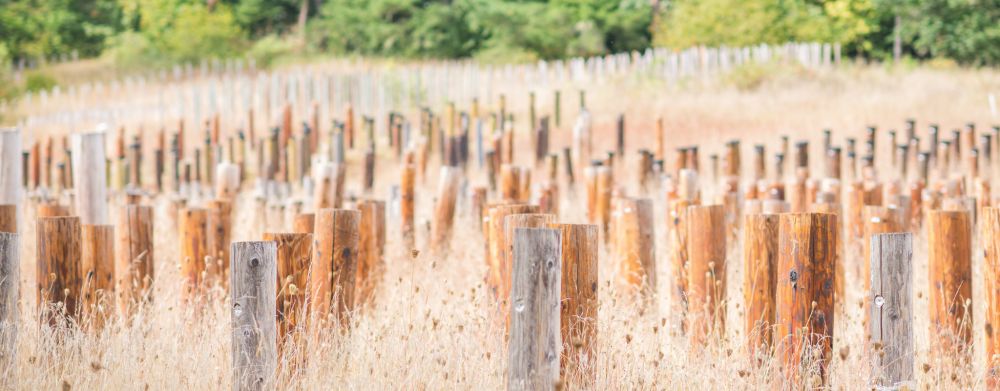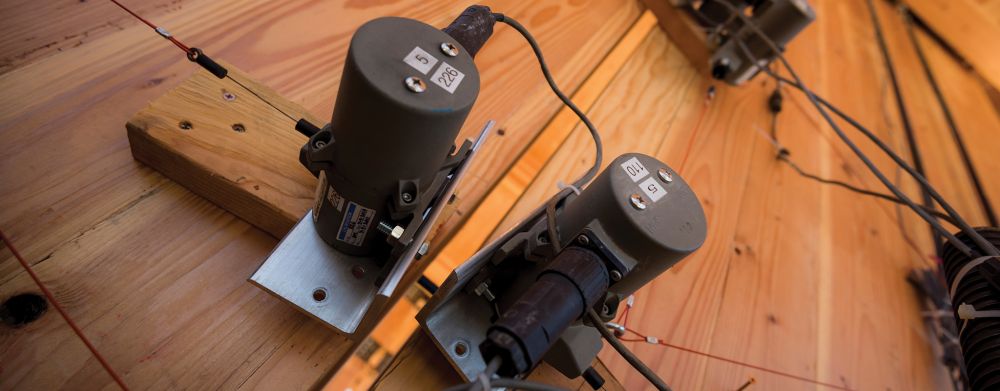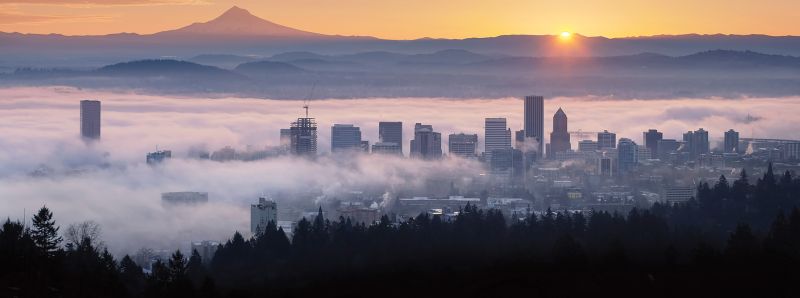
Landslides are a global hazard that take the lives of over ten thousand people a year and dramatically reshape our landscapes.
“The loss of lives is the most tragic consequence,” says Ben Leshchinsky, Richardson Chair in Forestry and associate professor of geotechnical engineering. “More often, however, the impact of landslides is economic and related to the costs of repairs or mitigation or moving people as well as impacts to emergency access.”
Leshchinsky studies various topics relating to geotechnical engineering, with a primary emphasis on landslides, slope stability, reinforced soil, and applying remote sensing techniques to assess geohazards.
Leshchinsky does some of his work in partnership with the Oregon Department of Transportation.
“They have lots of concerns about accessibility and emergency response, particularly following a big earthquake, rainstorm or change in climate,” Leshchinsky says.
When most people think of a landslide, they think of a sudden, abrupt failure and slope or hillside collapse. While those types of landslides exist, some landslides move more like a glacier than an avalanche.
“We do quite a bit of work monitoring slow-moving failures,” Leshchinsky says. “Understanding if there’s a pattern to their movement, like when they will move, how they will move, and how it might impact infrastructure. We also work to understand the risk or likelihood of an event.”
Determining the risk is key to planning and protecting communities and infrastructure. To support that effort, Leshchinsky and colleagues developed an approach to take landslide inventories, analyze their failure mechanism, understand their mechanical properties and use this data for regional-scale landslide hazard, susceptibility and risk assessment. These tools advance how we can use landslide databases to predict landslide hazards, which is essential to planners, engineers and scientists.
“The problem we were seeing before creating our tools is that people develop these databases that were missing key pieces of information,” Leshchinsky says. “I could, for example, see trends and other data in the database, but was missing information like how to mitigate landslide impacts, or how to evaluate how likely it is that a slope will fail.”
Leshchinsky is working with PhD student Nick Mathews to generate different potential landslide scenarios, like earthquakes or significant storm events, in the Oregon Coast Range to evaluate the susceptibility and vulnerability of infrastructure to damage or closures from landslides.
“One of the things I do is take inventories of landslides and back out information like shape, volume and strength to determine how slopes might fail,” Mathews says. “I also ask questions like does this location have ‘weak’ geology or ‘strong’ geology? I use those numbers to evaluate, in terms of forecast and predictive measures, to help determine what will fail next.”
“Documenting past slope failures gives us an idea of what will happen in the future,” Leshchinsky says.
Leshchinsky says we often associate landslides with human activities. While those can speed up or accelerate landslide activity, the fact is wherever there is a slope, there has likely been a landslide at some point in the past.
“These are natural processes connected to the environment, and they are the reasons our mountains, valleys and sea cliffs are the shape they are,” Leshchinsky says. “Landslides are the source of sediment and gravel that fish love to spawn in. They are one of the disturbances that work to produce a classic old-growth forest with a patchwork of vegetation and different types of trees.”
Landslides serve a role in our environment that’s not fully understood or appreciated. Leshchinsky says that while we know the basics of what drives landslides, there is incredible uncertainty in trying to predict where and when they will occur in the future.
“I tell my students that people say space is the final frontier. I don’t see it this way,” Leshchinsky says. “Down beneath our feet is the final frontier, and geological conditions we don’t know or can’t see often drive these landslides. Being able to take data from the surface and convert it to something meaningful from a perspective of understanding how things work is valuable worldwide.”
A version of this story appeared in the Spring 2021 issue of Focus on Forestry, the alumni magazine of the Oregon State University College of Forestry.









